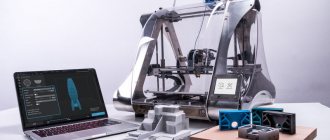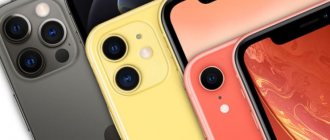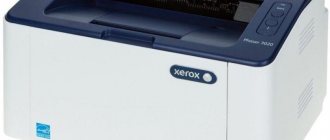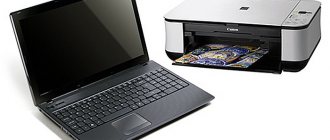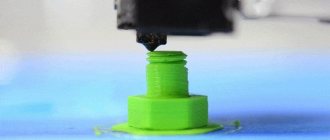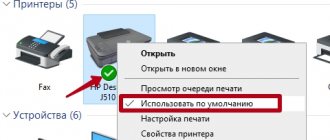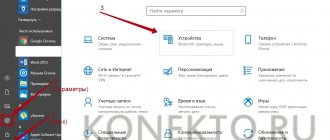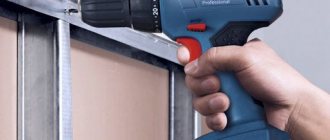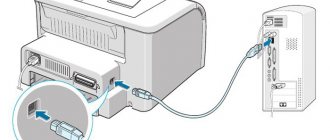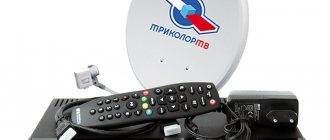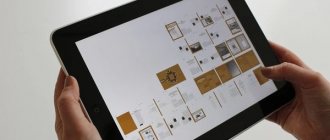Every day, a large number of users are faced with the need to print photos. For this purpose, devices are used that use various methods of recording information on a given surface. A sublimation printer, or, as it is also called, a heat-sublimation printer, is just one such device that allows you to print photographs in high resolution without loss of quality.
Is high quality always justified? Probably not, but if you need to work with bright colors and high resolution, then the sublimation process will be preferable. So, let's look at this device in more detail.
How it works
What is a sublimation printer? His work is based on the principle of sublimation, in other words, the process when a substance passes from one (solid) state to another (gaseous), bypassing the middle phase (liquid).
In all cases, there is a special element inside the sublimation machine that increases the temperature to start the process itself. A film is stretched between such an element and the thermal paper, more reminiscent of ordinary food-grade polyethylene. This film itself contains three primary colors (dye): cyan, magenta and yellow. When a command to start printing is received from the PC, the film quickly heats up, and after reaching the required temperature, the liquid from the dye evaporates. Photo paper has fairly large pores, which expand even more when heated, resulting in the application of a cloud of dust consisting of paint quickly and evenly. The paper catches all the paint material, absorbing it into itself. As soon as the printing process is completed, the pores immediately decrease in size, reliably fixing and storing information on their surface.
The printing process consists of three parts; the paint is not applied all at once, it happens in stages. Today, many models can play it safe and complete the printing with an additional, fourth run before issuing a photograph. This is necessary to create a protective film on the surface of the paper, which will additionally preserve the image from direct exposure to ultraviolet rays and other environmental influences (dirt and fingerprints).
Almost all heat-sublimation devices use a three- or four-pass printing system, but the operating principle itself is the same in all models.
Thanks to thermal sublimation, you can achieve the highest quality photographs. Such disadvantages as rasterization and banding are not found on such devices due to a different operating principle, unlike inkjet printers, where the quality of the final product often suffers greatly. Another design advantage of thermal sublimation printing is a uniform layer of ink on the surface of photo paper. There are no boundaries between an ink drop and blank paper due to the absence of drops themselves. The sublimation process does not apply ink to the surface, but places paints under the top paper layer, behind which the image acquires additional protective properties and becomes resistant to fading.
There is special software that allows you to make the finest temperature settings. Using this software, you can achieve unique image clarity and contrast, as well as display halftones and shades in a variety of gradations. Another clear advantage is the possibility of applying almost indistinguishable light tones, a high degree of intensity of dark tones and black.
What materials can be sublimation printed on?
This type of printer is notable for the fact that it can print on almost any surface. The user has a choice of the following materials.
- Paper. The sublimation method can be used to print photographs, business cards, booklets, menus and much more.
- Glass and ceramics. If desired, you can apply any pattern or design to a mug, bowl and other utensils.
- Metal. A sublimation printer can be used to print on souvenirs such as ashtrays, flasks, and spoons.
- Stone. If desired, the device can be used to apply inscriptions and portraits to monuments.
- Textile. Using a sublimation printer, you can easily decorate a boring T-shirt or sneakers with bright prints. You can also decorate the curtains in the room.
- Plastic. Image printing is available on trays, plastic dishes and any other items made of this material.
T-shirt printing
But there are also products on which printing with such a device is not recommended. Ink does not adhere well to leather, wood and natural fabrics.
And for printing on glass and stone, these surfaces must first be prepared for applying paint. To do this, they are treated with polymer compounds. You can print on natural fabrics only if you first apply a special primer to them, ensuring dense absorption of the paint.
Sublimation materials
Sublimation printers are universal and suitable for transferring designs to different surfaces. The principle is suitable for working with the following materials:
- Paper. Creation of various banners, flyers, photos and postcards.
- Ceramics. Images on dishes.
- Glass. Souvenirs and dishes.
- Metal. Flasks, souvenir lighters, ashtrays.
- Stone. Monuments and souvenirs.
- Textile. Applying prints to clothes or home textiles.
- Plastic. Badges, business cards and other similar elements.
But the method will not work for leather, wood or natural fabric goods. At the same time, synthetics retain sublimation paints on themselves. Before applying an image to glass or stone, you need to treat the material with a polymer composition. This is necessary to ensure high adhesion and preservation of the pattern.
If you still need to apply an image to natural fabric, you can use a special primer that holds the paint.
What is needed for printing
First of all, to apply the drawing you will need special paper and ink. In cases where printing on other materials is required, a heat press may be additionally required . In this case, the principle of operation of the device changes slightly. First you need to transfer the image onto paper, and then use a heat press to transfer it to another material. The process occurs under the influence of high temperatures and pressure.
Depending on your use cases, you can choose one of the following heat presses.
- Flat. Such a device will be required for printing on flat ceramics or glass.
- Baseball. Heat press, which is necessary for printing on caps, baseball caps and other headwear.
- For dishes. This device is used for printing on plates and glasses.
Combined heat press for sublimation printing
If we compare ordinary and sublimation paper, the difference is that the second has a special ultra-thin coating. It ensures that the paint adheres to the material and is applied most effectively.
Sublimation printers use a special solid ink that turns into a gas when heated. You need to select them based on the device model and the material on which the image will be applied.
Nozzle size
In order to decide which sublimation printer to buy among the two brands described above, you need to pay attention to such an indicator as the minimum volume of the printer’s ink drop. The measure of this characteristic is picoliters; they help determine the size of the print head nozzle.
This is a very important indicator, since the size of the drop directly affects the quality of subsequent printing. For example, if the four-color Epson Stylus S22 printer has 4 pl, then the six-color Epson Stylus Photo T50 has only 1.5 pl. A smaller drop means better pictures, color rendition is pleasing to the eye, and resolution and clarity cause aesthetic pleasure. It is these characteristics that influence the final result of a photograph or any other image.
This is a very important indicator, since the size of the drop directly affects the quality of subsequent printing. A smaller drop means better pictures, color rendition is pleasing to the eye, and resolution and clarity cause aesthetic pleasure. It is these characteristics that influence the final result of a photograph or any other image.
True, even in this case there are pitfalls. Conventional printing, where water-based inks are used, or pigment inks are used in printing, differs from sublimation printing, where the filling of the cartridges is quite thick and has greater dispersion, that is, they contain large particles. The problem of clogged nozzles occurs quite often in sublimation printers. In justification, we can say that after one cleaning, everything returns to normal, but uselessly drained ink and a photo ruined by half or even two-thirds become an unpleasant addition.
Based on world experience related to sublimation printing, we can say that the printers function perfectly. If the drop size is on average 4 pl. Unfortunately, in the modern world, such devices are increasingly difficult to find; they are removed from the assembly line. Every year they produce devices with smaller droplet sizes.
But this indicator is not so scary. Many people type perfectly, make themselves and others happy, and the drop size of one and a half picoliters does not bother them at all.
Epson sublimation printers have proven themselves to be excellent here:
- T50,
- T59,
- P50,
- PX660,
- 1410.
When the decision to buy a sublimation printer is ripe, and it is inclined to buy a device with a small drop size, then you need to understand several aspects:
- Buy only high quality sublimation inks.
- Clean the print head parking area regularly.
- Forget about leaving the device idle, this is a sure way to blockages; by all means, minimize non-working time intervals.
What kind of paper is used in the devices
The sublimation printer allows you to use different sizes of paper. The most commonly used formats for printing are A2, A3, A4. However, you can also work with smaller scales (A5, A6) or larger ones (A0, A1). To plot images on large-format sheets, special models called large-format plotters are used.
Sublimation printer for printing on large formats
Before you buy paper, you need to understand what kind of printing you need it for. The following division is usually used:
- A5, A6 – printing on small items such as dishes, business cards;
- A4 is used for applying designs to large-sized fabric items (T-shirts, shorts);
- A3 – printing of photographs, booklets;
- A0, A1, A2 are used when applying images to posters or flags.
You can buy sublimation paper either in sheets or in rolls, which indicate its quantity and format.
What is the essence of sublimation?
- An image is printed on an inkjet printer using sublimation ink - it can be color or black and white and with varying degrees of shading. The main requirement is that the drawing must be mirrored so that it is correctly transferred to the media.
- Next, the print is fixed on the product using heat-resistant tape in the desired position. The surface can be wood, plastic, porcelain, cardboard or other material.
- The workpiece is sent in this form to a heat press, where an image is transferred to it under the influence of pressure and temperature. After the end of the working cycle, the product can be used for its intended purpose.
Areas of application
Despite the fact that the operating principle is the same for all thermal sublimation machines, it is necessary to make differences in their use. There are consumer printers and devices that are called professional.
Amateur ones are suitable for small volumes of printing. As a rule, consumables for home sublimation printers are quite expensive, and their use is not always cost-effective. In any case, before purchasing such an expensive gadget, you need to calculate all the costs.
Professional devices are most often purchased by companies providing printing services. This is due to the fact that such devices (for example, Fujifilm products) have larger dimensions than consumer equipment, therefore, they require more space and consume more electricity. The advantage of this type of equipment is the relatively reasonable price tag for consumables. True, this is compensated by the very high cost of the device itself, which not every consumer can afford.
The scope of application of thermal sublimation printers is very extensive:
- small and medium-sized printing production;
- advertising and printing services;
- color printing services (photos, books, magazines, leaflets, posters and banners) provided by private entrepreneurs.
Such wide application is achieved due to the versatility of the sublimation method, which allows you to produce pictures for fabric and plastic, and not just apply them to paper.
The sublimation method for printing images is widely used throughout the world and is becoming increasingly popular due to the good quality of the products.
Advantages and disadvantages of technology
Like any complex technological solution, thermal sublimation printing is not without advantages and disadvantages. First, let's list the advantages.
- Remarkable level of detail and preservation of the finished photo.
- A unique color spectrum for a large number of solutions in working with images.
- Flexibility of thermal settings (if you use professional software).
- The print has a top protective layer.
- Relatively fast printing.
- Long shelf life of the finished image due to its chemical composition and thermal effects during printing.
The disadvantages are also obvious:
- high cost of consumables (especially in the case of amateur equipment);
- high starting cost of the device itself (regarding professional equipment) and the average cost of materials in the future.
How to choose a sublimation printing device
To choose the right printer, you need to compare many different options. First of all, it is important to pay attention to the brand of the device. It is best to choose equipment manufactured by Epson, Datacard, Mimaki. It is important to pay attention to the following features of the printer.
- Availability of CISS. The continuous ink supply system allows you to refill the device much less frequently.
- Number of flowers. Most often you can find 3 or 4 strip sublimation devices on the market. However, you can find six-color models. They allow for the highest quality printing.
- Drop volume. This parameter is very important when choosing a device for sublimation. In devices with insufficient drop volume, the print head is much more likely to clog and will therefore need to be cleaned regularly. For sublimation, a printer with a value of 3 pl.
How to choose?
To select a printer, it is important to study the specifics of these devices, as well as consider the main characteristics.
Popular manufacturers now
Users are offered sublimation printers from different companies. The most popular models are from Mimaki, Datacard, Epson, Canon, HP, Mitsubishi.
Home and professional models: what's the difference?
There are household and professional grade printers. The first category is characterized by relatively small size, ease of connection and ease of maintenance. For home use, regular A4 or A3 format models are usually selected.
Professional grade printers are more advanced. They are often presented in large format models. The units help process a large number of products continuously, so all components are “sharpened” for intensive use. Color rendering indicators for professional models are usually slightly higher.
Criterias of choice
When selecting a printer, it is advisable to consider several basic parameters.
- Continuous Ink Supply System (CISS) helps to store ink in cans instead of cartridges and does not require too frequent refills.
- Three-way and four-way devices seem to be popular. You can even find six-color devices that provide more saturated shades. However, such installations become clogged much more often.
- The minimum drop volume indicates how accurately the image details are drawn. The smaller it is, the higher the quality. The best option would be a model with a drop volume of 1.5 pl. However, in this case, the print head is much more likely to become clogged and need to be cleaned.
Top models
Specific sublimation models that have top-end characteristics and have won recognition from users deserve special consideration.
Canon Selphy CP910
A model for fans of photo printing. Does not limit the user in the choice of photo paper and guarantees high quality output images. The dimensions provide for working with A6 format, which somewhat limits the use of the device in other areas. There is a wireless Wi-Fi interface, as well as a connector for installing external memory. The installation is compact and can easily operate on its own battery. The disadvantages include limited possibilities for editing pictures, as well as the unavailability of consumables.
Epson SureColor F7170
A multifunctional device that provides work with a resolution of 720×1440 dpi. Suitable for printing inscriptions or designs on fabric, including a wide variety of clothing items.
Sony DPP-FP67
A compact device whose weight does not exceed 1 kg. There are enough possibilities for use in an office environment. Helps quickly apply images to various surfaces without margins and unnecessary noise during operation. Difficulties arise at the stage of purchasing consumables.
Mitsubishi Electric CP-D90DW
A functional device that provides a resolution of 300×300 dpi on a 15.2×22.9 cm format. Helps you print a photo in a few seconds. However, the model is not very universal and will require significant investment.
Epson PX-1004
Supports printing in A3 format. Originally designed for regular inkjet printing, but at the same time adapted for sublimation. One of the main advantages of the model can be considered the CISS equipment. On average, it can print 25 high quality photos or 35 black and white prints.
Fujifilm ASK-300
The device is small in size, but quite functional. Works with photo paper and rolls. Autonomous operation from rechargeable batteries is supported, making the Fujifilm ASK-300 completely autonomous.
Brother PJ-773
The miniature size allows you to use the printer as a mobile portable one. If printing is needed outside the home or office, then the Brother PJ773 will be an excellent solution to this problem. The device can be connected either via a USB cable or via Wi-Fi. The cost of such a device is about 1 thousand dollars, which is not affordable for everyone.
Kodak Easyshare 50
Portable sizes and support for many types of memory cards make the model one of the most popular on the market. Communication between a PC or laptop is carried out using a USB cable. Connecting via Wi-Fi is also possible when purchasing an additional device. The price of Kodak Easyshare 500 will pleasantly surprise you - only $100.
Best models
Based on reviews on the Internet, you can draw general conclusions about what a particular model is, but you can finally be convinced of its characteristics only after you start using it in practice. Below we will look at three popular models, giving a brief overview of their characteristics, their advantages and disadvantages.
Canon Selphy CP910
Canon is known in the world of printing equipment primarily due to the first-class quality of its products. It is hardly possible to find a printing specialist who would not be familiar with the products of this company. The cost of this model is 6990 rub. The printer is equipped with color sublimation printing technology and has a desktop form factor. The maximum photo paper format for this device is A6; high-resolution photographs can be printed. There is support for three standard colors, as well as a borderless printing function. The model is distinguished by its very high speed: on average, one photo is printed in 47 seconds, which is a very good indicator. Regular photo paper is used as consumables. The device body has several USB interfaces, as well as support for Wi-fi and AirPrint. On the rear panel there is a connector for connecting an MMC and SD memory card for printing directly from them (the “direct print” function).
Unfortunately, there is no stated support for PostScript, which means that working with fonts can be complicated.
The printer itself works with two operating systems (Windows and Mac OS). There is a bright display on the front of the case. An important feature is the ability to operate on battery power. Peak power consumption 60W, in standby mode no more than 4W. The device weighs only 810 grams, so it can be classified as compact.
- stylish appearance;
- large display (2.7 inches);
- easy to carry due to its small size and weight;
- can be powered by a built-in battery;
- two types of consumables, support for rsr-sr400 and rss-sr400 formats;
- convenient and easy-to-learn menu;
- low power consumption.
- cost of ink cartridge and photo paper;
- poor photo editing capabilities;
- automatic image calibration to the center
Mitsubishi Electric CP-D90DW
Representative of the class of professional equipment. has been producing printing equipment for long enough to understand it well. This sublimation printer is a desktop printer that can print high-resolution color photos. The maximum possible print size of an image is no more than 152 by 229 mm. The number of primary colors is standard (3). The maximum resolution for black and white and color printing is the same, 300 by 300 dpi.
But in terms of speed, the CP-D90DW is a real record holder: it is capable of printing a standard 10 by 15 cm photograph in just 7.8 seconds. With such indicators over a full working day, the device can transmit a lot of information through itself. Printing is carried out both on photo paper and on special rolls. The internal memory capacity is small, only 128 MB. Of the interfaces, only USB 2.0 is available. Unfortunately, like its predecessor, there is no “post script” support, so issues may also arise when working with fonts. The device works with two operating systems (Mac OS and Windows, support for Unix and Linux systems is not announced). The weight of the device is just over 14 kg.
- the highest print quality thanks to the use of the company’s most advanced technologies;
- high reliability of the device;
- high productivity (fast printing);
- easy to operate;
- long warranty period;
- wide range of supported cartridges and toners;
- fast printing without loss of quality.
- high price of consumables;
- It can be difficult to get cartridges;
- high cost of the device itself.
Sony DPP-FP67
The leader of the top 3 is a thermal sublimation printer from Sony. The DPP-FP67 model is positioned as a device for home use, however, it can also be used in a small office. The modest capabilities of this gadget are unlikely to be enough for a large company; it is not intended for that. Even the manufacturers themselves recommend using the model only for personal purposes, without overloading it. The price tag for the device settled on a quite acceptable amount of 6500 rubles.
The presence of a color matrix allows you to take photographs of excellent quality. The form factor is desktop. The largest print format is standard A6. Work with colors occurs according to the classic thermo-sublimation principle, which is based on 3 primary colors. The device operates in “fieldless” mode. You will have to wait much longer for a medium-sized photo than for the model located above - 63 seconds. The device feeds photo paper in 20 sheets. The only interfaces on the rear panel are classic USB 2.0.
Sony has always been famous for its expanded support and work with portable sources of information, and we can safely say that the tradition continues in the case of the DPP-FP67: the number of supported formats is impressive, and you can print directly from memory cards and flash drives. The device does not support “post script” and only works on Windows OS. On the front side there is a convenient display that displays all the main commands. Peak power consumption is 72W, and in standby mode only 1W. The weight of the device will be appreciated by lovers of portable equipment - only 1 kg.
- The optimum ratio of price and quality;
- stylish appearance;
- excellent quality of finished photographs;
- reliability;
- low power consumption;
- the device does not make loud sounds even at maximum load;
- easily transported from place to place.
- There may be difficulties supporting different editions of Windows;
- few settings in the software;
- It is difficult to buy cartridges and photo paper.
Review of printers: from history to modern times
The creator of sublimation as a type of printing is considered to be the Frenchman Noel de Plasset. While working for a textile company, he noticed that some dyes were able to change from solid to gas without going into a liquid intermediate state. This happened when the ink was heated to 190 degrees Celsius.
The discovery dates back to 1957, but it brought practical benefits only 20 years later, when personal computers began to spread around the world. At the same time, the first sublimation printer appeared.
Mass production of the devices was launched in the USA. Following them, Europe and Japan joined the process. The first sublimation printers printed with graphite dyes. The price of the equipment was very high, and only large companies could afford such a purchase. Today this technique has improved significantly. The assortment includes amateur and professional models. For printing, a special film is used, the format of which corresponds to the media format.
Printing mechanism in a sublimation printer
Sublimation equipment comes in different formats. It prints images in sizes A4, A5, A6. The main printer manufacturers are Mitsubishi, Epson, Canon and Sony. The first two are focused on professional equipment for the corporate segment. Sony products are primarily suitable for private use. Canon's product range includes both professional and amateur devices.
Let's consider several popular models:
- Canon Selphy CP910. The printer is suitable for printing photos - one photo takes 47 seconds. It implements the “borderless printing” option. Photo paper is used as a consumable. Maximum format - A6. The model is equipped with a Wi-Fi module, a slot for MMC and SD memory cards (you can print directly from the media). It is compact and can be powered by a built-in battery. Disadvantages include few options for image editing and high cost of consumables.
- Epson SureColor F7170. Printer for professional use. The maximum resolution is 720x1440 dpi. Works with DS Transfer Adhesive Textile and Multipurpose consumables. Suitable for drawings on textiles, interior printing, clothing.
- Sony DPP-FP67. It is positioned as equipment for home use, but its characteristics are sufficient for use in a small office. The device is mobile, compact - weighing 1 kg. Prints borderless, almost silently. It will take about 63 seconds to create one image. The main drawback of both this and other Sony models is the difficulty in purchasing consumables.
- Mitsubishi Electric CP-D90DW . Professional desktop device. The maximum print format is 15.2x22.9 cm, resolution is 300x300 dpi. The printer can print a 10x15 photo in less than 8 seconds. The disadvantage is the high cost.
Flagship model Mitsubishi Electric CP-D90DW
A video review from the Discovery Channel will help you learn more about the operation of sublimation printers:
